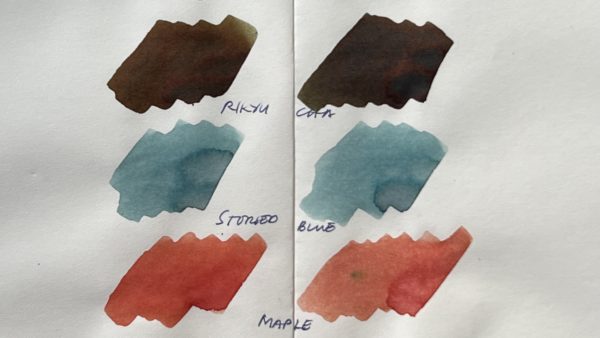I only have two. I reviewed my Omas Milord Arco when it arrived. I thought I’d lost it, just two weeks ago, when it wasn’t in my bag or in any of my usual storage places. I couldn’t work. I couldn’t eat breakfast. The Mottishaw-modified pen turned out to be in my toiletries box. (No, I did not try to use it to fill in my eyebrows with thick and thin strokes.)Â
Like the Milord, this Bologna is made of celluloid. It’s cylindrical, chunkier than the Milord, and slightly heavier because of the metal section. Autunno describes the celluloid well: small patches of warm iridescence against a background the shade of damp, rich earth.

Even as I consider pruning my collection, the Omas Bologna Autunno stands a good chance of remaining. My long-term relationships are with flexible-nibbed vintage pens and Japanese art transformed into pens, but there is room for a fling or two with good-looking Italians.

It is a piston filler with a fine nib. The nib is smooth and springy, typical of modern Omas.Â

(Yes, that is ink in the threads. I am ink-in-the-threads girl.) There is nothing memorable about the line it lays down. It writes finely, tending towards medium. A touch more pressure releases more ink onto the paper, but not enough to provide line variation. What makes this pen a potential keeper is the total writing experience: the balance of softness and spring in the nib, the forward heft of the metal section, the alacrity with which it starts writing even after I’ve not used it in a week. And of course, the way it catches the light as I turn it in my hand, hoping to find an idea floating in celluloid.


